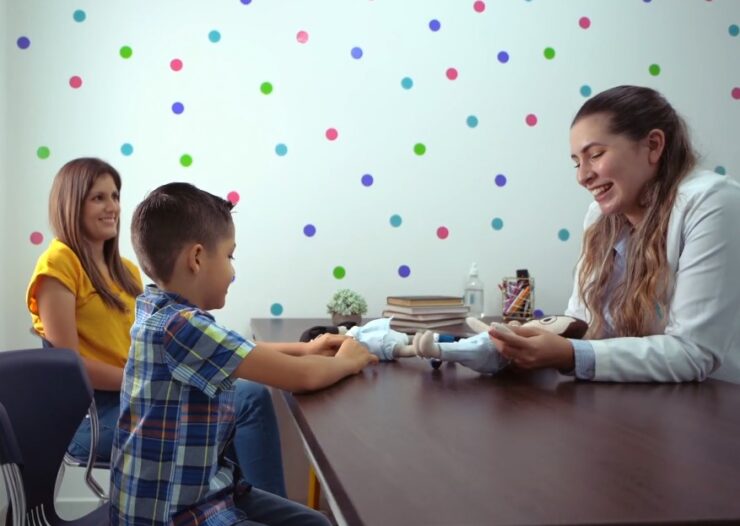In a world where people constantly strive to better themselves, we are constantly on the lookout for ways to improve our lives, mentally and physically. Integrated Listening Therapy (ILT) is an innovative and groundbreaking approach to enhancing brain function, offering hope to those struggling with various cognitive, emotional, and physical challenges.
In this comprehensive article, we will delve into what ILT is, the science behind it, how it works, and the benefits it offers to individuals of all ages.
Overview of Integrated Listening Therapy
Integrated Listening Therapy is a non-invasive, multisensory approach that combines auditory, visual, and movement-based therapies to improve brain function. It is designed to help individuals with learning difficulties, attention issues, sensory processing disorders, anxiety, depression, autism spectrum disorders, and a range of other neurological challenges.
ILT is based on the idea that our brain and nervous system are adaptable and can be retrained to function more effectively by engaging in targeted and integrated exercises.
The Science Behind ILT
The foundation of ILT lies in the concept of neuroplasticity, which posits that the brain is capable of forming new neural connections and pathways throughout our lives. This remarkable ability allows the brain to adapt, change, and reorganize itself in response to new experiences, injuries, and environmental influences.
ILT is also built on the principles of auditory, visual, and vestibular stimulation. By targeting these sensory systems, ILT aims to strengthen the connections between them, thus enhancing the brain’s overall processing abilities. Let’s explore each of these components in detail:
Auditory Stimulation
Auditory processing is a critical aspect of how we perceive and understand the world around us. ILT utilizes specially designed music and sound frequencies to stimulate the auditory system and train the brain to process sounds more efficiently. This helps improve listening skills, attention, and memory.
Visual Stimulation
Vision is another crucial sensory system that plays a significant role in our daily lives. ILT incorporates various visual exercises to enhance the brain’s ability to process visual information. This helps improve reading, writing, and other visually dependent skills.
Vestibular Stimulation
The vestibular system, located in the inner ear, is responsible for our sense of balance and spatial orientation. ILT incorporates movement-based exercises that stimulate the vestibular system, improving balance, coordination, and overall body awareness.
How Does Integrated Listening Therapy Work?

ILT typically involves a customized program that includes a combination of the following components:
Listening Sessions
Participants listen to specially designed music through headphones or speakers during regular sessions. This music has been modified to emphasize specific frequencies, helping to stimulate the auditory system and improve processing abilities.
Movement Exercises
Participants engage in movement-based exercises, such as balancing on a balance board or performing specific eye-tracking tasks. These exercises target the vestibular and visual systems, helping to improve coordination, balance, and spatial awareness.
Fine Motor Activities

Fine motor skills are essential for tasks like writing, buttoning clothes, and using utensils. ILT programs often include activities that target fine motor development, such as bead-threading, tracing, and cutting exercises.
Cognitive Exercises
To enhance cognitive skills such as memory, attention, and problem-solving, ILT programs may incorporate various cognitive exercises, including puzzles, memory games, and other brain-training activities.
Home Practice
Consistency is key when it comes to ILT. Participants are often encouraged to practice exercises and listening sessions at home to reinforce the skills and connections developed during therapy sessions.
The Benefits of Integrated Listening Therapy
ILT has been shown to provide a wide range of benefits for individuals across various age groups and with different neurological challenges. Some of the most significant benefits include:
1. Improved Attention and Focus

Integrated Listening Therapy helps to enhance the brain’s ability to filter out distractions and maintain focus on tasks, which is particularly beneficial for individuals with attention deficit disorders (ADD/ADHD).
2. Enhanced Learning Abilities
By improving auditory, visual, and vestibular processing, ILT can lead to better comprehension, retention, and application of new information. This can be especially helpful for those with learning disabilities or difficulties.
3. Better Communication Skills
ILT can improve both receptive (listening and understanding) and expressive (speaking and writing) language skills, which is crucial for successful social interactions and academic performance.
4. Reduced Anxiety and Stress
ILT has been shown to have a calming effect on the nervous system, reducing anxiety and stress levels. This can be particularly beneficial for individuals with anxiety disorders, autism spectrum disorders, or those who experience sensory overload.
5. Improved Emotional Regulation

By enhancing the brain’s ability to process and respond to sensory input, ILT can help individuals better regulate their emotions, leading to increased self-awareness and improved emotional well-being.
6. Enhanced Motor Skills
The movement-based exercises in ILT can improve both fine and gross motor skills, leading to better coordination, balance, and overall physical abilities.
7. Improved Social Skills
The combination of better communication, emotional regulation, and motor skills can contribute to improved social skills, helping individuals interact more effectively with others and form meaningful relationships.
8. Increased Self-Esteem
As individuals experience improvements in various aspects of their lives, they often develop a greater sense of self-confidence and self-esteem, leading to an overall better quality of life.
Success Stories

ILT has been implemented in various settings, including schools, clinics, and homes, and has helped countless individuals improve their lives. Here are a few success stories that illustrate the transformative power of Integrated Listening Therapy:
- A nine-year-old boy with ADHD who had difficulty focusing in school experienced significant improvements in his attention and focus after participating in an ILT program. His teachers reported that he was better able to complete assignments, participate in class discussions, and maintain focus during lessons.
- A teenage girl with a history of anxiety and panic attacks found relief through ILT. She reported a decrease in the frequency and intensity of her anxiety symptoms and was able to better manage her stress levels, ultimately leading to improved academic performance and social interactions.
- An adult with a traumatic brain injury (TBI) experienced significant improvements in memory, attention, and balance after engaging in an ILT program. This allowed him to return to work and regain a sense of independence.
Final Words
Integrated Listening Therapy is a groundbreaking approach that harnesses the power of neuroplasticity and multisensory stimulation to improve brain function and overall quality of life. With its numerous benefits and wide-ranging applications, ILT is revolutionizing the way we understand and address various neurological challenges. By offering hope and transformative results to those who need it most, ILT is paving the way for a brighter, more inclusive future for individuals of all ages and abilities.

